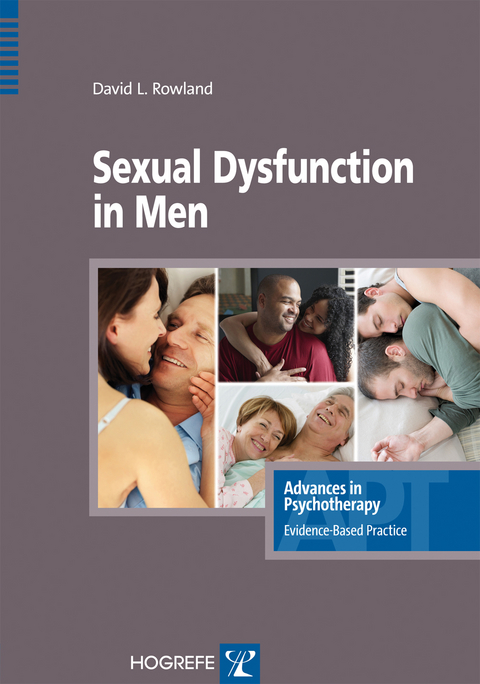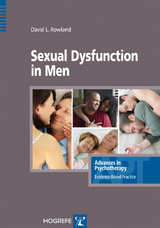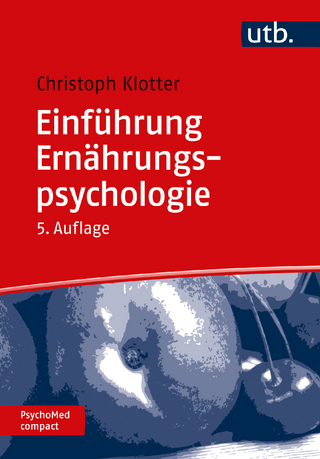Sexual Dysfunction in Men
Hogrefe Publishing (Verlag)
978-0-88937-402-7 (ISBN)
David L. Rowland, PhD, is Professor of Psychology at Valparaiso University, IN, and consultant on the Standards Committee of the International Society of Sexual Medicine. His research focuses on understanding sexual response and disorders in men and women, particularly the interface between the physiological and psychological experience of sexual response. Prof. Rowland's work has been widely published in over 130 research articles, monographs, and book chapters.
Table of Contents
Preface
Acknowledgments
1. Description
1.1 Terminology
1.2 Definition
1.3 Epidemiology
1.3.1 Low Sexual Desire
1.3.2 Erectile Dysfunction
1.3.3 Premature Ejaculation
1.3.4 Delayed and Inhibited Ejaculation
1.3.5 Other Considerations
1.4 Course and Prognosis
1.4.1 Psychophysiology of Male Sexual Function: A Brief
Overview
1.4.2 Etiology of Male Sexual Dysfunction
1.5 Differential Diagnosis
1.6 Comorbidities
1.7 Diagnostic Procedures and Documentation
1.7.1 International Index of Erectile Function (IIEF)
1.7.2 Sexual Health Inventory for Men (SHIM)
1.7.3 Self-Esteem and Relationship Questionnaire (SEAR)
1.7.4 Male Sexual Health Questionnaire (MSHQ)
1.7.5 Premature Ejaculation Prevalence and Attitudes
(PEPA)
1.7.6 Index of Premature Ejaculation (IPE)
1.7.7 Premature Ejaculation Diagnostic Tool (PEDT)
1.7.8 Quality of Erection Questionnaire (QEQ)
1.7.9 Sexual Quality of Life Measure for Men (SQOL-M)
2. Theories and Models of Sexual Dysfunction
2.1 Introduction and Issues
2.2 Modified Biopsychosocial Model
2.2.1 Biological/Physiological Factors
2.2.2 Psychological Factors
2.2.3 Relationship Factors
2.2.4 Sociocultural Factors
2.2.5 Interaction of the Biopsychosocial Domains
3. Diagnosis and Treatment Indications
3.1 Establishing a General Framework for Evaluation
3.2 Organization of the Evaluation
3.3 Identifying the Problem and Quantifying Severity
3.4 Identifying Etiological Factors
3.4.1 Biomedical Assessment and Medical History
3.4.2 Psychosexual and Psychological Histories
3.4.3 Relationship Assessment
3.4.4 Probing Sociocultural Factors
3.5 Defining the Desired Outcome
3.6 Treatment of Male Sexual Dysfunction: Setting the
Context
4. Treatment
4.1 Treatment of Low Sexual Desire
4.1.1 Nomenclature and Definition
4.1.2 Prevalence
4.1.3 Risk Factors, Comorbidities, and Other Red Flags
4.1.4 Methods of Treatment
4.2. Treatment of Erectile Dysfunction
4.2.1 Nomenclature and Definition
4.2.2 Prevalence
4.2.3 Understanding the Mechanisms of Erection
4.2.4 Risk Factors, Comorbidities, and Other Red Flags
4.2.5 Methods of Treatment
4.2.6 Combinations of Methods
4.3. Treatment of Premature Ejaculation
4.3.1 Nomenclature and Definition
4.3.2 Prevalence
4.3.3 Risk Factors, Comorbidities, and Other Red Flags
4.3.4 Methods of Treatment
4.3.5 Combinations of Methods
4.4 Treatment of Delayed and Inhibited Ejaculation
4.4.1 Nomenclature and Definition
4.4.2 Prevalence
4.4.3 Etiology, Risk Factors, and Comorbidities
4.4.4 Evaluation
4.5.5 Methods of Treatment
4.4.6 Treatment Efficacy
5. Final Thoughts and Notes
5.1 Overarching Strategies
5.2 Eleven Pointers from Clinical Notes
6. Case Vignette
7. Further Reading and Resources
8. References
9. Appendix: Tools and Resources
| Reihe/Serie | Advances in Psychotherapy - Evidence-Based Practice ; 26 |
|---|---|
| Verlagsort | Toronto |
| Sprache | englisch |
| Maße | 178 x 254 mm |
| Themenwelt | Geisteswissenschaften ► Psychologie ► Sozialpsychologie |
| Medizin / Pharmazie ► Medizinische Fachgebiete ► Psychiatrie / Psychotherapie | |
| Medizin / Pharmazie ► Medizinische Fachgebiete ► Urologie | |
| ISBN-10 | 0-88937-402-3 / 0889374023 |
| ISBN-13 | 978-0-88937-402-7 / 9780889374027 |
| Zustand | Neuware |
| Haben Sie eine Frage zum Produkt? |
aus dem Bereich




